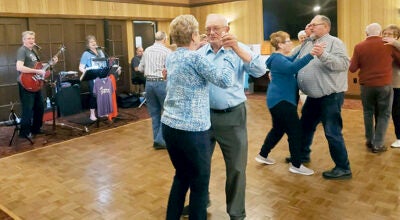Just follow me
Published 8:44 am Saturday, July 4, 2009
Marian Clennon wants to connect with constituents more, 140 characters at a time.
The Ward 3 councilwoman is a Twitter user — or “Tweep” if using the Web site’s lingo — and thinks the service could be useful as a way for the city to reach out to citizens and for citizens to connect with the council.
Twitter allows users to publish 140-word status updates, or “tweets.” These are seen by anyone “following” a user, who can turn around and follow other people’s updates as well.
Clennon thinks the service, which has exploded in popularity this past year, could be a quick way for the city to send updates, such as road closures or emergency alerts, to citizens.
But most intriguing to Clennon is the idea of getting citizens more connected with the council via Twitter.
The councilwoman is just starting to ponder ideas, but said gathering a list of concerns from citizens, or even fielding questions live during council meetings, are possibilities.
“Everyone is still experimenting with (Twitter),” Clennon said. “What can we use it for?”
While Clennon would like to expand the scope of Twitter within Austin, a city-sponsored Twitter account does not seem imminent. Clennon said she is the only councilmember actively involved with the site, and Mayor Tom Stiehm said he knows very little about the micro-blogging service.
“I can’t say it’s bad,” he said. “I just don’t know much about it.”
Austin Administrative Assistant Jeanne Howatt said Twitter could be a useful tool for the city, but said there just isn’t the staff right now to get it running.
“It’s a great idea,” she said. “Maybe in the future.”
But some cities have already turned to Twitter and other social networking sites.
In Minnesota, Edina, Minnetonka and Falcon Heights have tapped into Twitter, to name a few. And in Topeka, Kan., a Minnesota transplant has just recently jump-started social networking efforts.
Ande Davis, a 26-year-old graduate of Minnesota State University-Mankato, has been working in the city’s communications department to get Facebook and Twitter accounts up and running, the latter of which is about a month old.
“It’s gotten a good reaction from the public,” Davis said. “It’s been able to virally spread.”
Davis grew up using social networking, and while at Mankato he was able to incorporate blogs and other online tools into a class he taught. He said he sees more and more cities taking advantage.
“If for no other reason, it’s a great idea for a city to use Twitter for emergency situations,” Davis said.
Topeka will continue to get more comfortable using Twitter, Davis said, and look to use it in new ways.
“We’re still feeling around how to use it to best benefit the city,” he said.
Cities turning to Twitter has been a growing trend, said Steve Lunceford, creator of govtwit.com, a Web directory of governments that use Twitter.
Lunceford’s site, which has grown to include more than 1,800 Twitter accounts, originally was driven by federal agencies. But he said he has noticed an increase in state and city governments joining the mix, estimating that between one-fifth and one-fourth of his directory now falls in the “local” category.
“At the end of the day, if you’re a city government, you want to reach out by as many channels as you can,” Lunceford said.
He said there is no right or wrong way to use Twitter, but said it’s essential for city governments to simply be on there because more and more citizens are communicating that way.
Professor Nora Paul is the director of the University of Minnesota’s Institute for New Media Studies. She said Twitter is a crucial tool for people involved in current events — like governments or the media — but said there are concerns with Twitter.
For one, she said the 140-word limit can lead to misunderstanding, particularly among users not accustomed to writing so concisely.
She also said discussions on Twitter can become overwhelmingly large, another thing that can lead to confusion and misunderstanding.
She cited recent events in Iran as a prime example — while Twitter posts were certainly providing news that otherwise wouldn’t be available , the sheer volume of posts and the uncertainty of how legitimate they all were caused some problems.
She said a councilmember like Clennon would be wise to embrace Twitter, but would not be wise to focus on it alone.
“Twitter isn’t television. I don’t think it’ll have that kind of impact,” she said. “I would not want this to be her only way to connect with constituents.”
Like Lunceford, Paul said Twitter is only one channel among many and should accompany other forms of communication.
“They’re interesting little info blasts,” she said of Twitter posts.
Austin resident Lee Aase said he would certainly be interested to see the city tap into Twitter.
Aase is manager for syndications and social media at the Mayo Clinic in Rochester, and is heavily involved with Twitter, both professionally and personally.
“I think there’s tremendous potential for a multi-way dialogue,” Aase said of Twitter’s use in the public sphere.
Aase thinks Austin officials could effectively reach constituents in new ways with Twitter, even older residents who may be less familiar with the Internet.
“People are connected,” he said. “It’d be an educational process.”
A system with only a few hundred followers would be a success, Aase said, because these people could spread a message with word of mouth, and more traditional methods would still reach others.
“It doesn’t have to involve everyone,” Aase said.
For now, councilwoman Clennon is looking for any followers she can get and is taking her Twitter experiment in baby steps. But she does see its potential.
“I think I’ll start talking about it a little more,” she said. “We’ll see if it works, if anyone is bold enough to try it.”



